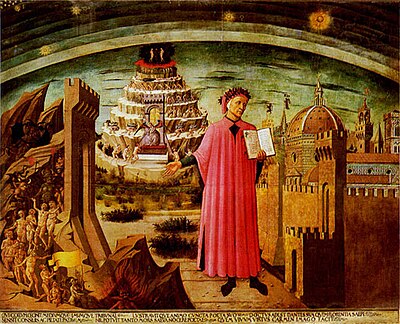Portal:Middle Ages
The Middle Ages portal
In the
During the High Middle Ages, which began after 1000, the population of Europe increased greatly as the
Difficulties and calamities, including a
Selected article
Selected biography

Joan of Arc (French: Jeanne d'Arc, ca. 1412– 30 May 1431), nicknamed "The Maid of Orléans" (French: La Pucelle d'Orléans), is a
Twenty-five years after her execution, an inquisitorial court authorized by
To the present day, Joan of Arc has remained a significant figure in
Did you know...
- ...that a paillasse is a thin mattress filled with hay or sawdust and was commonly used in the middle ages?
- ...that a barbican is a tower or other fortification defending the drawbridge, usually the gateway?
- ...that a chain-mailand worn under the helmet for extra protection?
- ...that a serf’s family upon the serf’s death; usually the family’s best animal, such as a cow, horse or most commonly ox?
- ...that before 1066, it was noted in the Domesday Book, if one Welshman killed another, the dead man’s relatives could exact retribution on the killer and his family (even burning their houses) until burial of the victim the next day?
- ...that buboes are pus-filled egg-sized swellings of the lymph glands of the neck, armpits, and groin; typically found in cases of bubonic plague?
- ...that laws passed in the late 1300s aimed at maintaining class distinctions by prohibiting lower classes from dressing as if they belonged to higher classes?
- ...that Pier Gerlofs Donia, a 15th century Frisian freedom fighter of 7 feet tall was alleged to be so strong that he could lift a 1000 pound horse?
- ...that Edgar Ætheling was the last of the Anglo-Saxon Kings of England, but was only proclaimed, never crowned?
Selected image
 |
The Late Middle Ages is a term used by historians to describe European history in the period of the 14th and 15th centuries (AD 1300–1500). The Late Middle Ages were preceded by the High Middle Ages, and followed by the Early Modern era (Renaissance).
Related portals
Subcategories
Topics
Things you can do
 |
Here are some tasks awaiting attention:
|
WikiProjects
Associated Wikimedia
The following Wikimedia Foundation sister projects provide more on this subject:
-
Commons
Free media repository -
Wikibooks
Free textbooks and manuals -
Wikidata
Free knowledge base -
Wikinews
Free-content news -
Wikiquote
Collection of quotations -
Wikisource
Free-content library -
Wikiversity
Free learning tools -
Wiktionary
Dictionary and thesaurus









